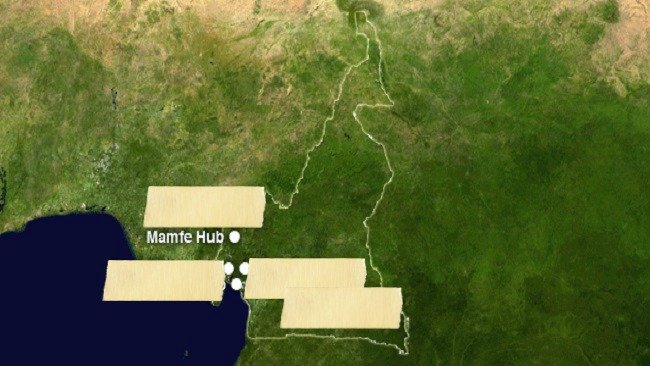Mamfe Central Sub Division
Mamfe Central Sub Division is found in Manyu Division, South West Region of Cameroo. Mamfe is the headquarters of the Manyu Division. It has as coordinates 5⁰46’N 9⁰17’E.
It is about 74km away from the Cameroon-Nigeria border and has a total surface area of 7000km². The population of the area as of 2017 estimate was 36,500 inhabitants with a population density of 19.78 persons/km². Mamfe is bordered to the North by Akwaya Sub Division, to the South and East by Eyumojock and to the West by Tinto. The Mamfe Council Area also has 35 Municipal councilors.
History of Mamfe Central Sub Division
Mamfe Central Sub Division is the headquarters of the Manyu Division in the South West Region of the country. Its creation dates back in 1917 as Mamfe Native Authority. Then, It comprised of the present day Fontem, Eyumojock, Nguti, Akwaya, Tinto, Widikum and Mamfe Central. When Eyumojock was later created in 1978, it became Mamfe Rural Council. Later on in 1995, Tinto was carved out, leaving Mamfe Central. Before 1995, the government appointed the Municipal administrators with Ayuk Emmanuel Ako being the first mayor from 1995-2002.
Ethnic Groups
The Mamfe area has 11 autonomous villages which are grouped into four clans. Mamfe town which is the headquarters of Manyu Division has extended from small Mamfe as the main town to part of Egbekaw and Bessongabang villages.
The indigenes of the Mamfe area are the Bayangs. Different tribes inhabit the Mamfe area with domineering tribes including the Keyangs and Anyangs and different other tribes from the North West Region of the country such as the Widikum, Banso and Bali. Most of these people are attracted into the area because of the availability of fertile soils which encourage farming practices in the area. This has highly contributed to agricultural output of some of the villages in this area.
The high level of interaction in this area has also led to intermarriages.
The popular local food in this area include Fufu and Eru (which is consumed worldwide), garri and egusi soup and plantain and ndole.
Climate
The Mamfe area is found within the Equatorial Climatic Zone and therefore has an Equatorial Rain Forest Climate which is characterised by two distinct seasons: the rainy season and the dry season. The rainy season in Mamfe Central Sub Division starts from March or April and ends in September and sometimes in October with an annual average rainfall which ranges from 3500 mm-4000 mm, with the months of July and August as peak periods. The dry season in the area begins from October/November and ends in March. The dry season is characterised by elevated temperatures of 30⁰c-32⁰c.

Soils
In the Mamfe area, three different types of soil are identified. These soil types include the red clay soil, the sandy soil and the top soil or humus soil.
Hydrology
The Mamfe area is well watered by the Manyu and the Badi Rivers and their tributaries. The manyu River and Badi River are very important rivers that combine to form the Cross River which flows into Nigeria. Some streams also exist in the Mamfe area such as the Baku and Monyen streams. Swamps also exist in places like Lala quarter and Bachou Ntai towards Egbekaw village and the other towards the Catholic Mission in Mamfe. There is also a waterfall in Batchou Ntai.
Vegetation
In general, the area is dominated by Equatorial Rain Forest and also falls within the Tropical Evergreen Forest Type. The Mamfe area is part of the Guineo-Congolian Floristic Region with altitude which ranges from 90 m to 500 m above sea level. There is also the primary vegetation and secondary vegetation types found in this area. The variation of their characteristics has led to the existence of two unique types of vegetation in the area which include the Mid-Altitude Forest vegetation and the Lowland Rain Forest vegetation.
The area is also blessed with abundant forest resources. It is approximated that over 80% of the Mamfe Central Sub Division is covered by forest. The forest resources in this area include timber, Non Timber Products and wildlife.
Minerals
The area also contains a lot of mineral deposits. Most of the minerals are still unexploited. Quarries are also found all over the area and are highly exploited, even though about 50% of the exploitation is illegal. Much income will flow in if strict measures are put in place to stop illegal exploitation.
Economic Activity in Mamfe Central SUB Division
The area is made of three main sectors. These sectors include the primary sector which deals with natural resource management activities such as fishing, animal rearing, agriculture, forest exploitation and fishing. The secondary sector is defined by mining and industrial activities. The tertiary sector is characterised by production of services such as banking and transportation.
Education
The Education of sons and daughters of this area is a priority. The Mamfe area has no university, but the Catholic university is under construction. There also exist the Queen of the Rosary Catholic College which was the first all-female boarding school in the entire country. There are several vocational schools and a teacher’s training college.
Religion
Mamfe is open to all types of worship, even though most of the people practice Christianity with main Christian denominations being the Catholic, Presbyterian, Baptist, Apostolic and Full Gospel with several other Pentecostal churches. Islam and traditional religion is also practiced in the area. The Bayang tribe worship several gods strongly linked to traditional institution (Obasinjom and Ekpe society).
Hope you like this page on Mamfe Central Sub Division. Click here to return to our Home Page
Click below to read more
https://en.wikipedia.org/wiki/Mamfe